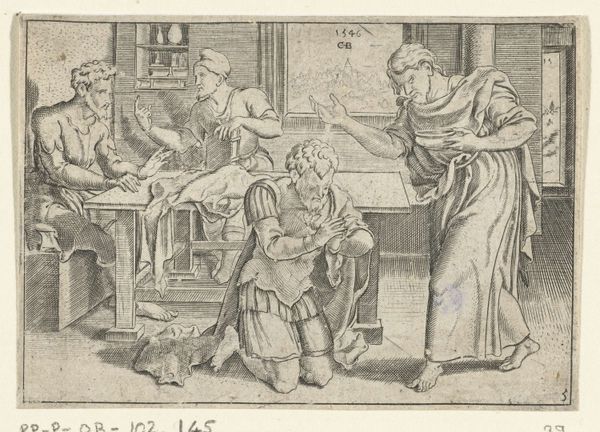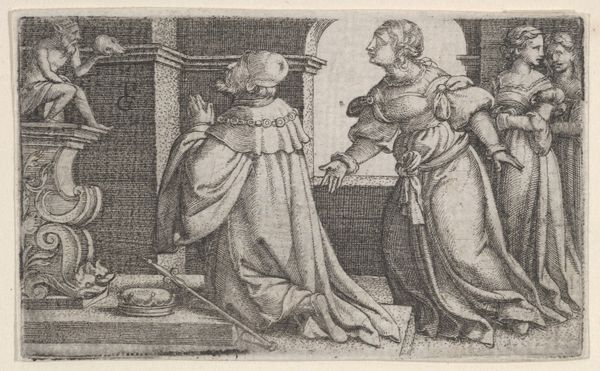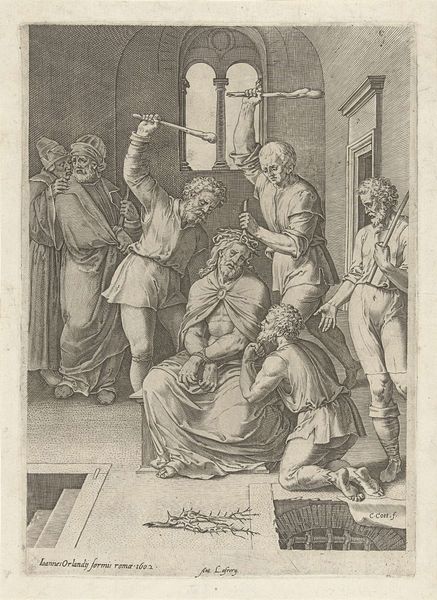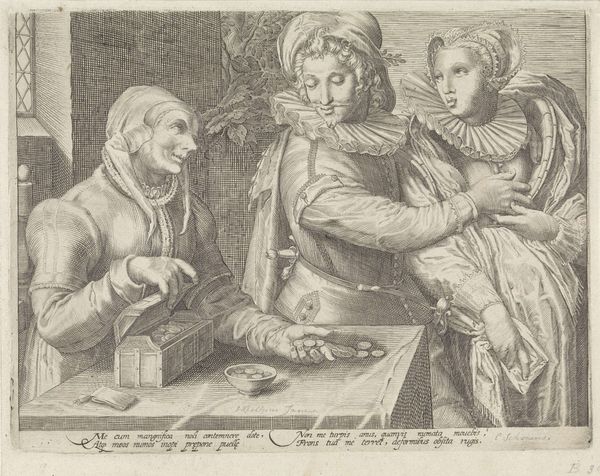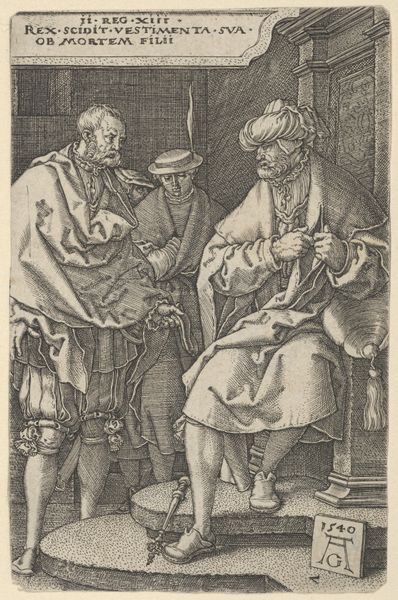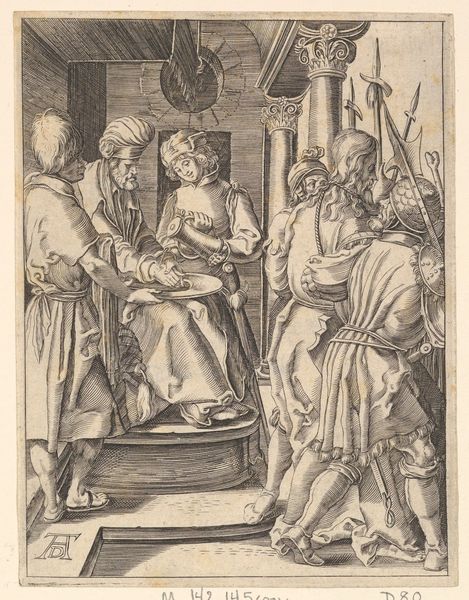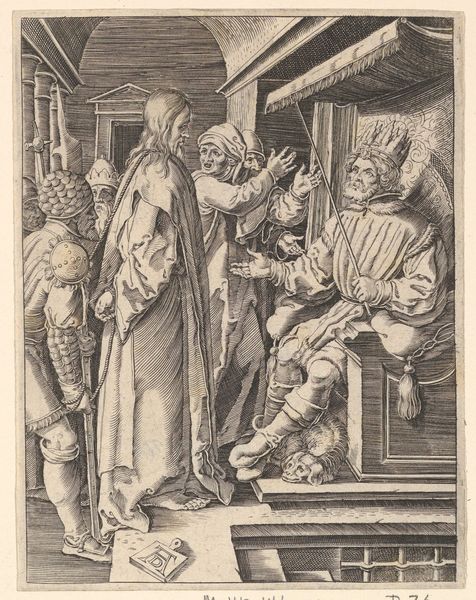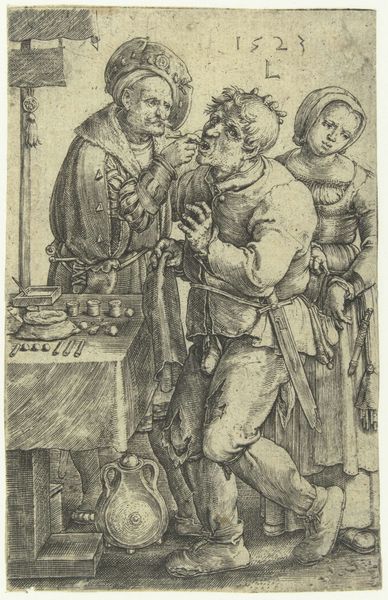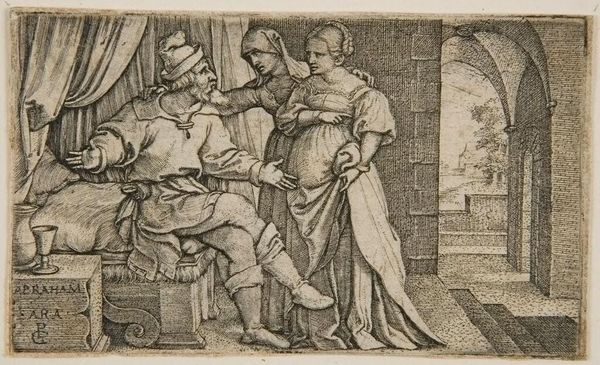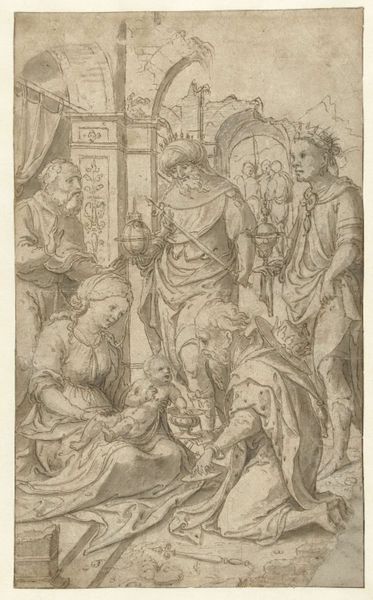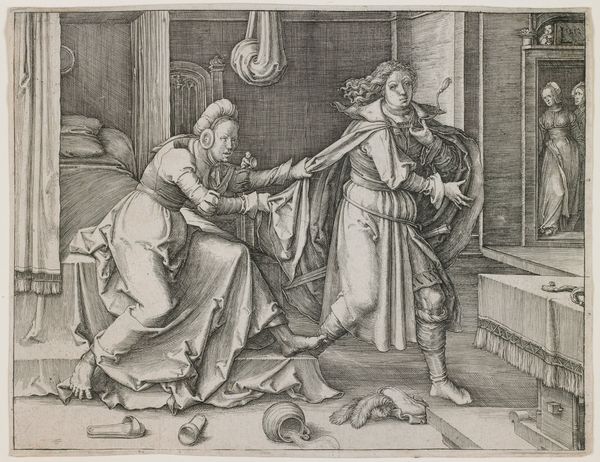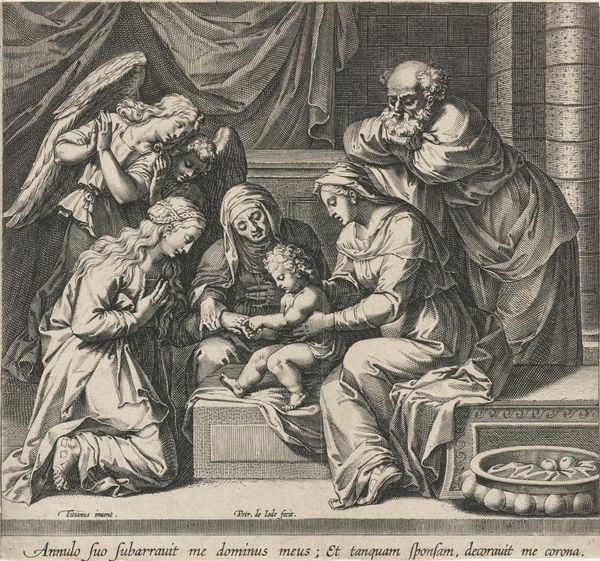
print, engraving
#
portrait
#
narrative-art
#
baroque
# print
#
old engraving style
#
portrait drawing
#
genre-painting
#
dress
#
engraving
Dimensions: height 188 mm, width 249 mm
Copyright: Rijks Museum: Open Domain
Curator: Before us, we have an engraving titled "Jong paar en een oude man met geldkist (Ongelijke liefde)," which translates to "Young Couple and an Old Man with a Money Chest (Unequal Love)". It's attributed to an anonymous artist and dates sometime between 1589 and 1607. It’s currently held in the collection of the Rijksmuseum. Editor: My immediate reaction is a sense of intrigue. The composition, a stark black and white scene, depicts an old man practically drooling over money as a young couple looks on, a little scandalous. The level of detail in the clothing and the man’s chest is impressive. Curator: Indeed. Let’s consider the materiality. As a print, likely an engraving, it would have been produced through the labor-intensive process of incising an image onto a metal plate. Prints like this were more accessible than paintings, so they played a key role in disseminating stories, morals, and social commentary to a wider audience. This unequal love theme was quite common at the time. Editor: It seems to me it tells us quite a bit about societal values. An older man wielding his wealth to attain a younger wife certainly reveals aspects of wealth and power. The contrast between the old man, practically hunched over with greed, and the young couple highlights a socio-economic critique. Is it about love, or rather a financial contract in disguise? Curator: I agree entirely. And remember that museums and collections also play a significant role in this print's story. The Rijksmuseum displays not just artwork, but narratives. How has the artwork been used over time in dialogues around love, social status, and gender expectations? Editor: Excellent point. Perhaps what is truly revealed through studying material production in tandem with sociopolitical history are those silent, coded languages behind material creation. To consider these languages provides vital perspective that art museums curate for visitors. Curator: Absolutely. By understanding how these works were produced and the worlds they inhabited, we can start unpacking those intricate narratives. Editor: And begin seeing these historical stories through the lens of craft, labor and commerce. It reframes our engagement in intriguing ways. Curator: Precisely. It shows that these are artifacts which allow an insightful interpretation and, when appreciated fully, create bridges across cultures and generations.
Comments
No comments
Be the first to comment and join the conversation on the ultimate creative platform.
